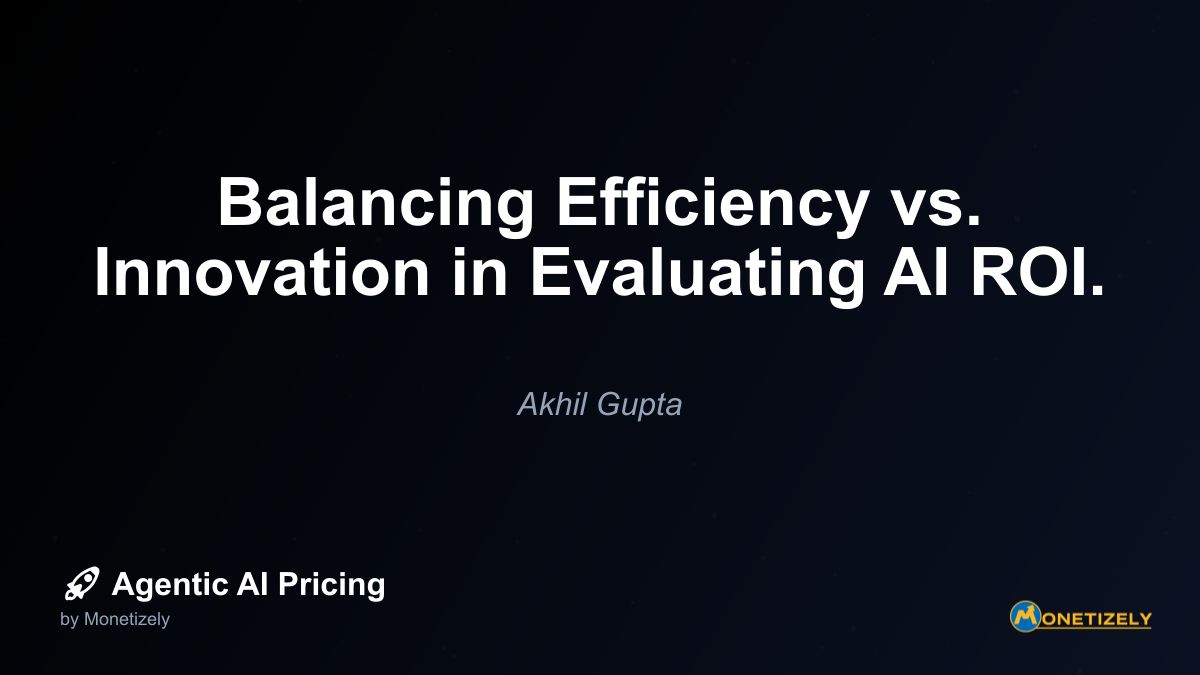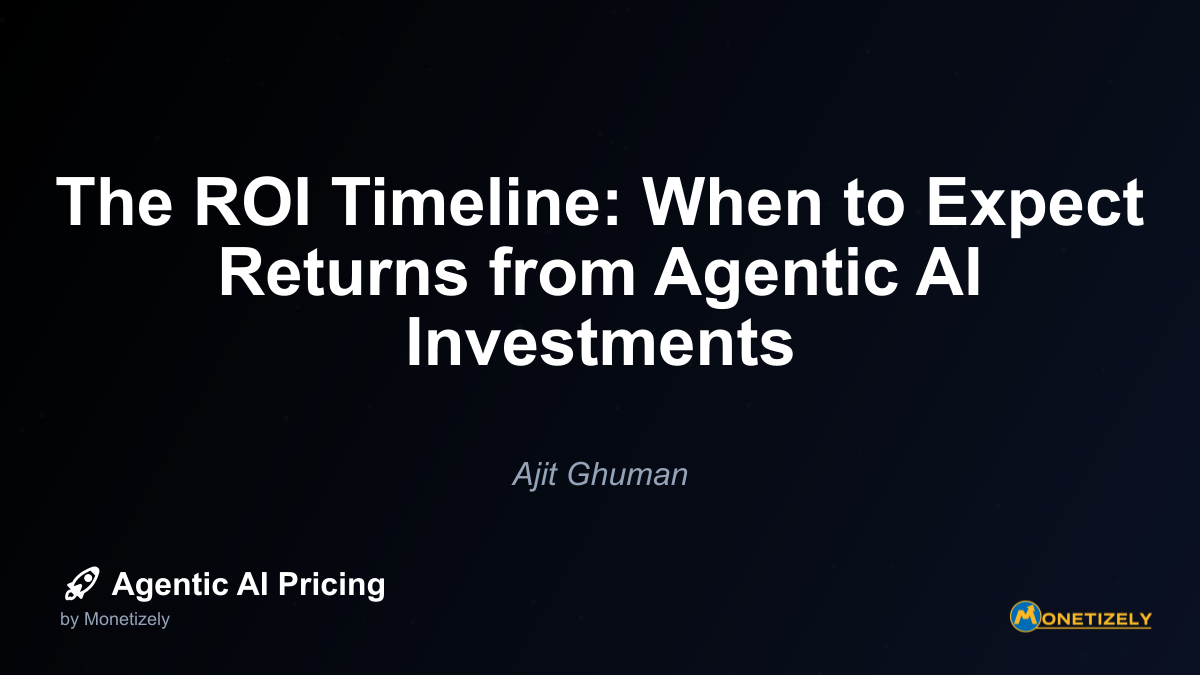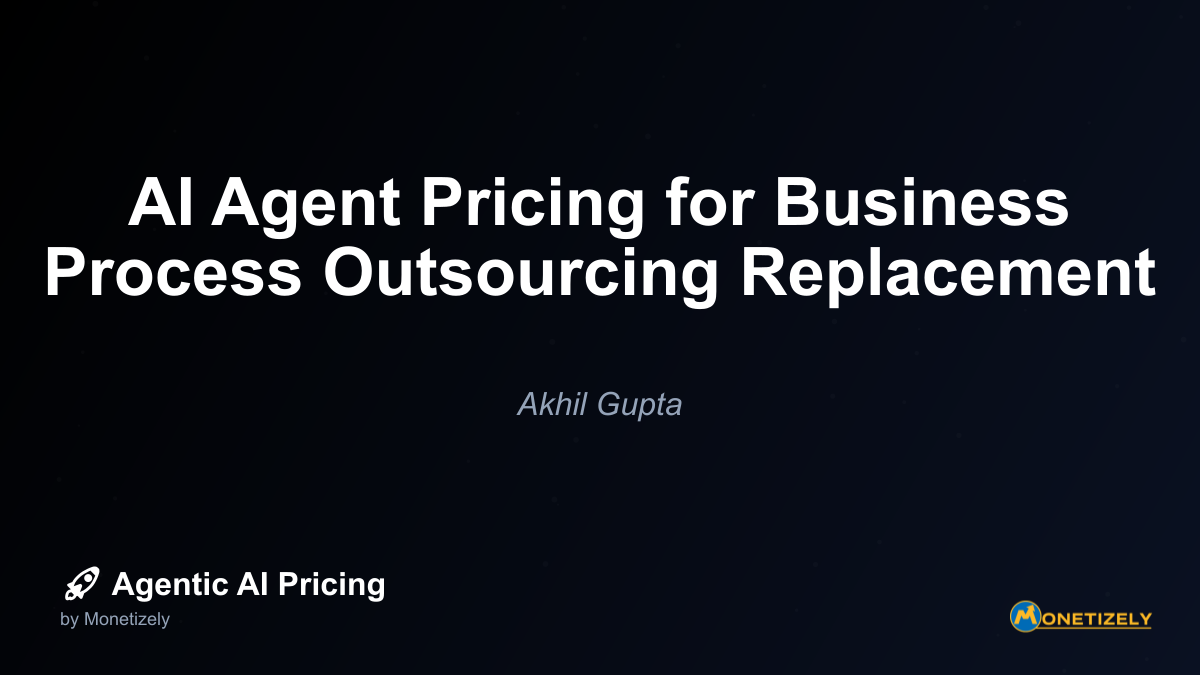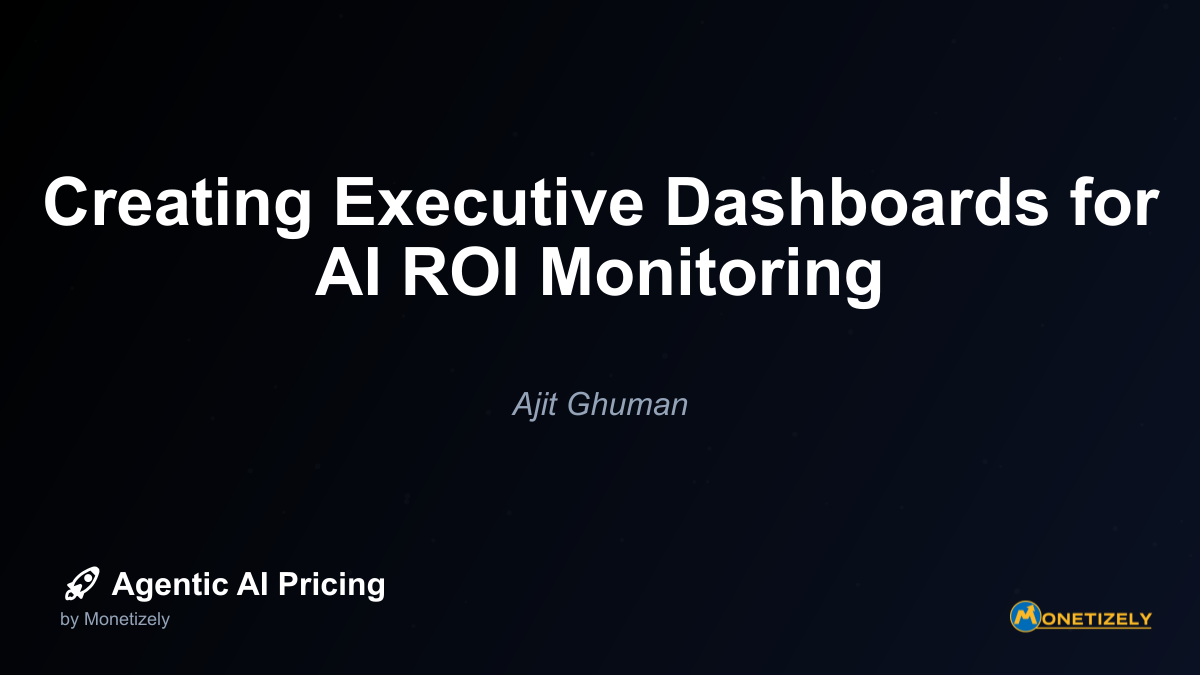· Ajit Ghuman · ROI and Value · 6 min read
Quantifying Intangible Benefits of AI (CX, Innovation, etc.)
AI and SaaS Pricing Masterclass
Learn the art of strategic pricing directly from industry experts. Our comprehensive course provides frameworks and methodologies for optimizing your pricing strategy in the evolving AI landscape. Earn a professional certification that can be imported directly to your LinkedIn profile.
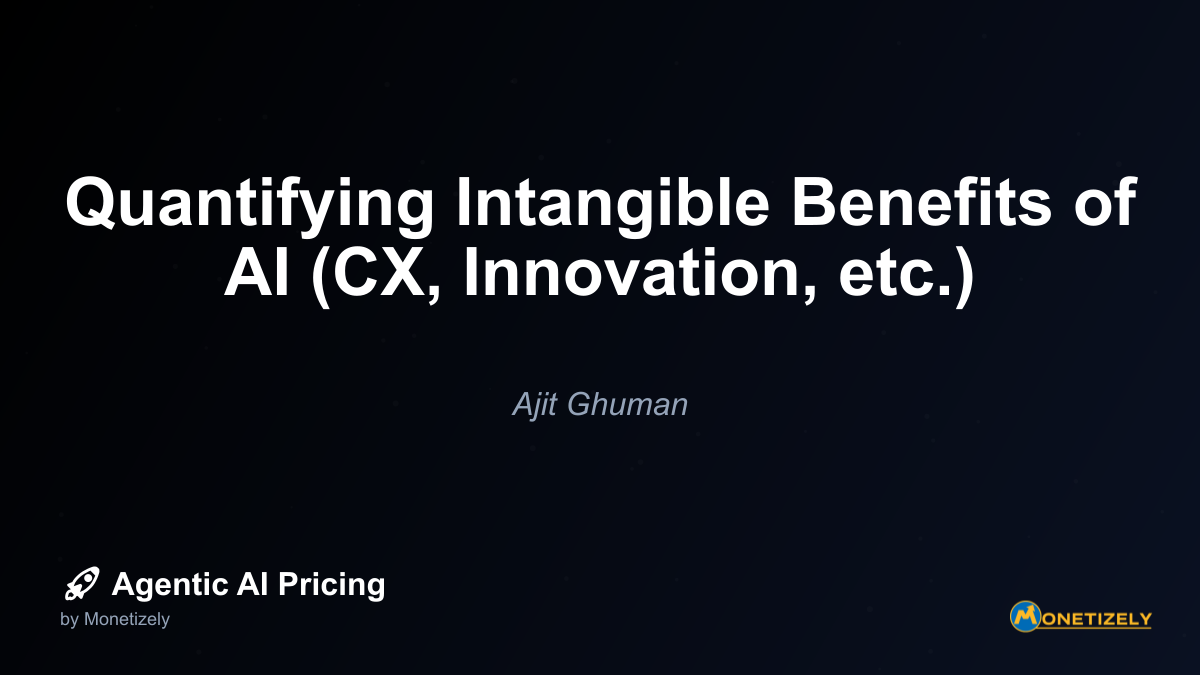
Competitive Positioning and Market Perception
Beyond operational improvements, AI implementations often deliver substantial value by enhancing an organization’s market position and external perception. These benefits, while challenging to measure directly, translate into tangible value through several mechanisms:
Brand Premium Metrics
Organizations recognized as AI innovators often command price premiums and enjoy enhanced brand perception. Measurement approaches include:
- Price sensitivity analysis before/after AI implementation
- Brand perception studies focused on innovation attributes
- Willingness-to-pay research comparing your offerings to competitors
For example, a financial services firm implementing AI-powered investment tools might track not only direct usage metrics but also measure the 12% increase in prospects willing to pay premium fees for “technology-enhanced advisory services.”
Market Share and Growth Rate Differentials
Compare your performance trajectory against industry benchmarks and competitors:
- Market share growth rate differential
- New customer acquisition velocity
- Competitive win rate changes
These metrics can isolate the impact of AI-driven capabilities on competitive positioning, particularly when analyzed against specific competitor segments or market niches.
Analyst and Market Recognition
While seemingly subjective, external validation provides meaningful signals:
- Industry analyst positioning improvements
- Media coverage quality and quantity
- Speaking invitations and thought leadership opportunities
These indicators correlate with sales cycle acceleration and reduced customer acquisition costs that can be quantified through appropriate tracking mechanisms.
Developing a Comprehensive Intangible Benefits Valuation Framework
Rather than treating intangible benefits as separate from traditional ROI calculations, organizations should develop integrated valuation frameworks that capture the full spectrum of AI-generated value. A comprehensive approach includes:
1. Multi-dimensional Value Mapping
Start by mapping all potential value dimensions across four categories:
- Direct financial impacts (cost reduction, revenue generation)
- Operational improvements (efficiency, quality, speed)
- Customer/market impacts (experience, perception, loyalty)
- Organizational capabilities (innovation, decision quality, agility)
For each dimension, identify specific metrics that can serve as value indicators, ranging from direct measurements to proxy indicators.
2. Baseline Establishment and Counterfactual Analysis
Before implementation, establish baseline measurements across all identified metrics. This creates the foundation for meaningful before/after comparisons.
Additionally, develop “counterfactual scenarios”—projections of how metrics would have evolved without the AI implementation based on historical trends and industry benchmarks. This approach helps isolate AI’s impact from other factors affecting business performance.
3. Value Attribution Modeling
Develop models that attribute observed changes to specific causes, including:
- The AI implementation itself
- Other concurrent initiatives
- Market/environmental factors
- Seasonal or cyclical patterns
Advanced techniques like multivariate regression analysis, controlled experiments, and synthetic control methods can strengthen attribution accuracy.
4. Time-Based Value Realization Tracking
Recognize that different benefits materialize on different timelines:
- Efficiency gains often appear immediately
- Customer experience improvements typically show measurable impact within 3-6 months
- Innovation acceleration benefits may take 12+ months to fully materialize
- Competitive positioning advantages might require 18-24 months to translate into market share gains
Tracking value realization against expected timelines helps manage expectations and ensures appropriate patience for longer-term benefits.
Practical Implementation: The Balanced Scorecard Approach
A modified balanced scorecard approach provides a practical framework for organizations seeking to quantify intangible AI benefits. This approach organizes metrics across four perspectives:
1. Financial Perspective
- Traditional ROI metrics
- Cost avoidance measurements
- Revenue enhancement attribution
2. Customer Perspective
- Experience metrics (NPS, CSAT, CES)
- Engagement indicators
- Loyalty behaviors
- Advocacy measurements
3. Internal Process Perspective
- Operational efficiency
- Quality improvements
- Cycle time reductions
- Decision velocity and quality
4. Learning and Growth Perspective
- Innovation metrics
- Capability development indicators
- Employee experience measures
- Knowledge creation and utilization
For each perspective, develop a mix of leading indicators (predictive of future value) and lagging indicators (confirming realized value) to provide a comprehensive view of AI’s impact.
Case Study: Quantifying Intangible Benefits in Healthcare AI
A healthcare system implementing an AI-powered clinical decision support system provides an illustrative example of comprehensive benefit quantification:
Direct Financial Benefits:
- 12% reduction in unnecessary diagnostic tests ($3.2M annual savings)
- 8% decrease in average length of stay (capacity value: $4.8M)
Intangible Benefits Quantified:
Clinical Quality Improvements
- 22% reduction in diagnostic errors
- 17% improvement in treatment plan optimization
- Translated to financial value through:
- Malpractice premium reductions
- Reduced readmission penalties
- Value-based care incentive achievements
Physician Experience Enhancement
- 35% reduction in EHR documentation time
- 28% improvement in physician satisfaction scores
- Quantified through:
- Physician retention improvement (reduced recruitment costs)
- Locum tenens expense reduction
- Productivity increases in patient interactions
Patient Experience Impact
- 14% improvement in patient satisfaction
- 23% increase in provider recommendation likelihood
- Valued through:
- Patient retention improvements
- Increased service utilization
- Word-of-mouth referral increases
Through comprehensive measurement, the organization determined that intangible benefits represented 62% of the AI system’s total value—benefits that would have been missed in a traditional ROI calculation.
Communicating Intangible Value to Stakeholders
Even with robust measurement frameworks, communicating intangible benefits effectively to stakeholders remains challenging. Several approaches can enhance stakeholder understanding and buy-in:
Storytelling with Data
Combine quantitative metrics with narrative examples that illustrate how AI capabilities translate into real-world outcomes. For example, pair customer satisfaction improvements with specific customer stories and testimonials that bring the numbers to life.
Visualization Techniques
Develop visual representations that show relationships between AI capabilities, intangible benefits, and ultimate business outcomes. Value tree diagrams, impact flow charts, and benefit realization timelines help stakeholders understand complex value relationships.
Benchmarking and Comparative Analysis
Contextualize your organization’s experience against industry benchmarks and competitor performance. This approach helps stakeholders understand the strategic importance of intangible benefits in maintaining competitive positioning.
Executive-Friendly Scorecards
Create executive dashboards that present both tangible and intangible benefit metrics in a balanced format, ensuring that less directly measurable benefits receive appropriate attention in review discussions.
Future Directions: Maturing Intangible Benefit Measurement
As AI implementations proliferate, methodologies for quantifying intangible benefits will continue to evolve. Several emerging approaches show particular promise:
Causal AI for Attribution Modeling
Advanced causal inference techniques are improving our ability to isolate AI’s impact from other factors, strengthening attribution accuracy and confidence.
Digital Twins for Counterfactual Analysis
Digital twin simulations allow organizations to model “what if” scenarios with increasing sophistication, enhancing our understanding of how outcomes would differ without AI implementation.
Integrated Value Frameworks
Industry-specific value frameworks are emerging that provide standardized approaches to intangible benefit quantification, enabling better benchmarking and cross-organization comparisons.
Real-time Value Tracking
Continuous monitoring systems that track benefit realization in real-time are replacing point-in-time ROI calculations, providing ongoing visibility into value creation across all benefit dimensions.
Conclusion: Making the Invisible Visible
The challenge of quantifying AI’s intangible benefits isn’t merely an accounting exercise—it’s fundamental to making sound investment decisions and realizing AI’s full potential. Organizations that develop robust frameworks for measuring these benefits gain several critical advantages:
- More accurate investment prioritization based on total value potential rather than just easily measured returns
- Better alignment between AI initiatives and strategic objectives by recognizing value creation across all dimensions
- Enhanced stakeholder buy-in through comprehensive demonstration of AI’s business impact
- Improved implementation approaches that optimize for total value rather than just efficiency gains
While perfect measurement of intangible benefits remains elusive, the frameworks and approaches outlined here provide practical pathways to make the invisible increasingly visible. By embracing these methodologies, organizations can ensure their AI investment decisions reflect the full spectrum of value these technologies create—from immediate cost savings to transformative capabilities that reshape competitive landscapes.
The organizations that master this challenge will not only make better AI investment decisions but will also gain advantage through superior ability to target implementations toward maximum total value creation—both tangible and intangible.
For more insights on measuring the comprehensive ROI of AI implementations, you can explore our detailed guide on How to Measure ROI for AI Agent Implementations that provides additional frameworks and metrics for quantifying AI’s business impact.
Co-Founder & CEO
Ajit is the author of Price To Scale, a top book on SaaS Pricing and is the Founder of Monetizely. Ajit has led and worked in pricing and product marketing at firms like Twilio, Narvar and Medallia. His work has been featured in Forbes and VentureBeat. Ajit regularly consults with software companies from Seed stage to post-IPO on pricing strategy. Ajit is also a highly-rated co-instructor for 'The Art of SaaS Pricing and Monetization' on Maven.
Pricing Strategy Audit
Let our experts analyze your current pricing strategy and identify opportunities for improvement. Our data-driven assessment will help you unlock untapped revenue potential and optimize your AI pricing approach.

